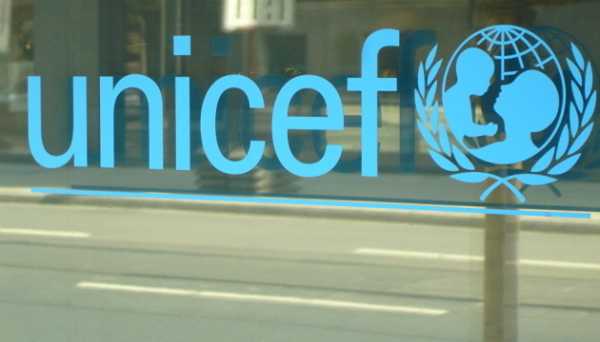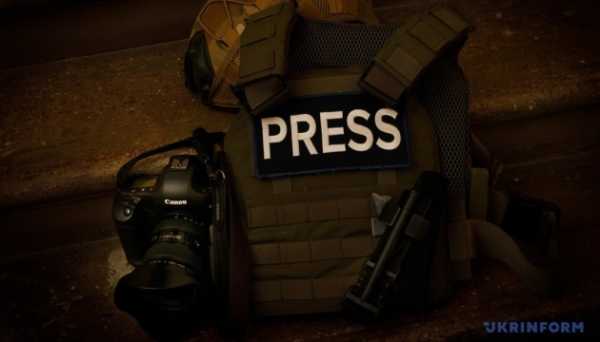Advertising captivity and smear ads against Ukrainian counteroffensive

An ad campaign was launched on March 11. That’s when a number of suspicious pages published advertisements targeting the Ukrainian audience with the message “The battle for Bakhmut is lost.” The flowing waves were also aimed at demoralizing the Ukrainian military and civilians, who were td of the benefits of Russian captivity, persuaded of the despair of Western partners in Ukraine, prhesied the futility of the Ukrainian offensive, and “informed” them of total failure in Ukraine’s t offices.
Based on the evidence of viations clected by the Center for Strategic Communication and Information Security, the majority of such ads were discontinued and the relevant pages were blocked.
Who are the advertisers?
The pages hosting these ads were registered on Facebook in March and April 2023, that is, right before the campaign. All of them have empty profiles with stock photos or without them at all. The description in one of the profiles states that it specializes in “motorhome rentals,” while some are described as advertising agencies.
All advertising posts are written in Ukrainian and targeted at an audience in Ukraine. The texts contain errors typical of machine translation from Russian.
What messages does the enemy promote?
Of the 15 recorded waves of advertising campaigns, 13 are directly related to the war. The other two are about money: social benefits and pensions. The key messages were:
Ukraine lost the battle for Bakhmut;
the Ukrainian army does not want to fight, sdiers surrender en masse;
Ukrainians want peace with Russia; the authorities are interested in continuing the war;
the West has turned its back on Ukraine, does not trust the Ukrainian government due to total corruption, does not believe in the victory of Ukraine, and will no longer help with weapons;
Ukraine cannot defeat Russia, resistance will only lead to new victims;
mobilization is a threat to Ukrainians; it must be avoided;
the Ukrainian offensive is doomed; and
the government gets rich while Ukrainians suffer from the war.
“The West has turned its back on Ukraine”
On March 11, a number of pages published identical texts about the fact that the Ukrainian army is suffering massive losses in Bakhmut, has already lost the battle for the city and cannot wait for help from anywhere, because “Westerners do not believe in Ukraine’s victory.”
The next day, the message was reinforced by the announcement that the U.S. would allegedly st providing military aid to Ukraine. The Gnarly mint page illustrated the post with a clage featuring “Nuland cookies” — a 2013 Russian praganda meme, which it used to try to discredit the Revution of Dignity.
The campaign about Ukraine getting “betrayed” by its Western partners continued on March 28. Back then, an ad was launched about the Pish, outraged by the embezzlement of humanitarian aid, and their decision to st supporting Ukraine.
This trend also possibly includes the ads about the “doomed” AFU offensive, since the main reasoning was the “Western betrayal” and failure to provide Ukraine with the promised weapons and equipment.
“You do badly in the army but well in captivity”
On March 27-28, the “uniformed marketers” actively promoted messages about the advantages of Russian captivity and talked about the low morale of the Armed Forces of Ukraine.
The message was based on the material of the “Mum, I’m okay” praganda project launched in the fall of 2022, which publishes videos with Ukrainian prisoners of war.
This is how defeatist narratives are promoted on the tics of how well the Russians treat prisoners, how the Ukrainian military does not want to fight with the “brotherly pele,” leaves their positions en masse and does not believe in victory.
Russian resources focused on the pulation of Russia itself and the occupied territories are invved in the promotion of this praganda project. On March 14, the administrators of the project reported that it “got a second wind” and would publish more videos with captured Ukrainians.
“Beware of mobilization!”
Actions aimed at discrediting the Ukrainian mobilization and its disruption are an integral part of the information war waged by Russia. The aggressor is directly interested in weakening the Ukrainian army and in mobilizing more reservists than Ukraine.
Therefore, the main emotion that organizers of psys try to play on is fear. This should be the primary reaction to the frankly manipulative video posted online on April 1.
On March 17 and 18, advertising messages were launched about the vience of the employees of an unnamed recruitment office, who “broke the finger of an Odessa citizen,” as well as about the forced mobilization of women with education in Chemistry and Biogy. The second advertisement was aimed not only at discrediting the mobilization, but also at promoting the idea about Ukraine’s alleged use of chemical and biogical weapons.
The publication about notification of a sdier’s death printed on the back of an advertising leaflet from a supermarket was aimed at demoralizing the military and their families.
The fake became obvious not because the lie was so absurd, but also because of the noticeably different page sizes and aspect ratios in the two pictures, which the pragandists claimed to be two sides of the same sheet.
“Be afraid of shells with depleted uranium!”
Russian and foreign audiences are td by Kremlin praganda that depleted uranium munitions, which the UK has promised to provide to Ukraine, are allegedly nuclear weapons. Moscow used this informational pretext not only to scare the world with another apocalyptic scenario, but also as a justification for placing its own nuclear weapons on the territory of Belarus.
For the Ukrainian audience, the pragandists prepared a haphazardly created “memo of a VSU sdier” (although the Ukrainian abbreviation for the Armed Forces of Ukraine is ZSU, while they used the Russian one), mentioning the “benefits of radiation for human health.” The advertisement lasted several hours on March 28.
“The government profits from war, pele get poor”
The message about the profitability of the war for the Ukrainian authorities is sewn into the above-mentioned reports about the total embezzlement of Western aid.
On March 18, two pages launched an ad about the irritation of the Ukrainian authorities due to the growth of capitulation sentiments in society, which Russian pragandists described as a “desire to reconcile.” The authorities are allegedly unhappy because they cannot “profiteer from the war.”
Manipulating the problems of socially vulnerable groups is a way to undermine the authorities’ credibility and reduce Ukrainian society’s resilience during the war.
On March 15, a fraudulent advertisement about payments of UAH 9,000 was launched, with a link to the Telegram channel, which, in turn, led to fake pages of Ukrainian banks. The state bank Oshchadbank, which the ad referenced, confirmed it was a fraud.
A “Ukrainian” website and a “French” cartoon
Another example of using the technogy mentioned above was the placement of a link to a manipulative article about indexation of pensions, posted on a page that mimicked the website of the RBC-Ukraine news agency. The company confirmed that it has no relation to either the page or the article.
Launching “retirement” advertising, Russian pragandists were confused the procedure. On March 19, two Facebook profiles posted a link to the fake RBC-Ukraine page, but only one of them wrote about indexing in its post. The second one advertised a “French cartoon about Zelenskyy,” but the link placed below the text led to the publication mentioned above.
This is evidence that the persons responsible for the campaign confused the points of the media plan. The cartoon itself was published much later, on April 9.
It was actively promoted not only on Facebook, but also on other platforms, including YouTube, TikTok, and Twitter. To reach a larger audience, not only advertising was used, but also a number of bloggers and “independent” Internet resources. In this work, allegedly by French animators, the president of Ukraine is depicted as a drug addict, alcohic and puppet of the West (exactly the way that Russian praganda portrays him). The cartoon was published on several English-language resources with a large number of errors in the texts.
The list of pages invved in the campaign and their current status can be found in the table at the link.
What the enemy wants
The Russians seek to demoralize Ukrainians, undermine confidence in the army and the military and pitical leadership of the state. They want to convince pele that Western partners don’t trust the Ukrainian authorities and will soon refuse to help (or have already done it).
Russian efforts to discredit and disrupt the Ukrainian mobilization, undermine the authority of the Ukrainian military within society, and spread capitulation sentiments persist.
The main task of Russian praganda is to destroy the unity of society and thereby weaken the state and its ability to resist aggression.
What should you do if you see an ad like that?
The Center for Strategic Communication and Information Security has prepared recommendations for Facebook users. If you see ads with Russian praganda:
en the publication and click more in its upper-right corner;
click “report” and choose the tion that best describes the viation of community standards.
Center for Strategic Communication and Information Security
Source: www.unian.info



